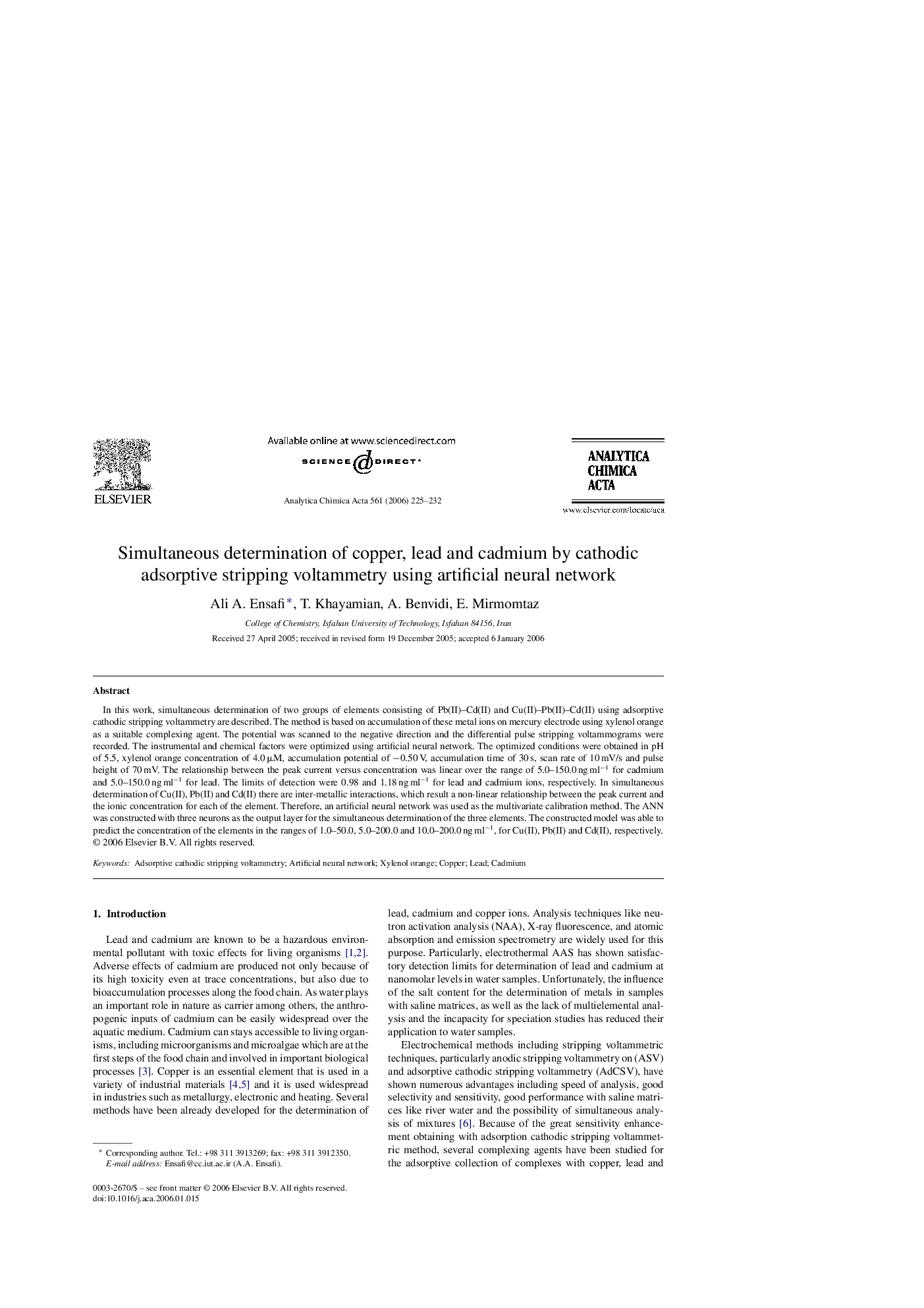| Article ID | Journal | Published Year | Pages | File Type |
|---|---|---|---|---|
| 1172204 | Analytica Chimica Acta | 2006 | 8 Pages |
In this work, simultaneous determination of two groups of elements consisting of Pb(II)–Cd(II) and Cu(II)–Pb(II)–Cd(II) using adsorptive cathodic stripping voltammetry are described. The method is based on accumulation of these metal ions on mercury electrode using xylenol orange as a suitable complexing agent. The potential was scanned to the negative direction and the differential pulse stripping voltammograms were recorded. The instrumental and chemical factors were optimized using artificial neural network. The optimized conditions were obtained in pH of 5.5, xylenol orange concentration of 4.0 μM, accumulation potential of −0.50 V, accumulation time of 30 s, scan rate of 10 mV/s and pulse height of 70 mV. The relationship between the peak current versus concentration was linear over the range of 5.0–150.0 ng ml−1 for cadmium and 5.0–150.0 ng ml−1 for lead. The limits of detection were 0.98 and 1.18 ng ml−1 for lead and cadmium ions, respectively. In simultaneous determination of Cu(II), Pb(II) and Cd(II) there are inter-metallic interactions, which result a non-linear relationship between the peak current and the ionic concentration for each of the element. Therefore, an artificial neural network was used as the multivariate calibration method. The ANN was constructed with three neurons as the output layer for the simultaneous determination of the three elements. The constructed model was able to predict the concentration of the elements in the ranges of 1.0–50.0, 5.0–200.0 and 10.0–200.0 ng ml−1, for Cu(II), Pb(II) and Cd(II), respectively.
